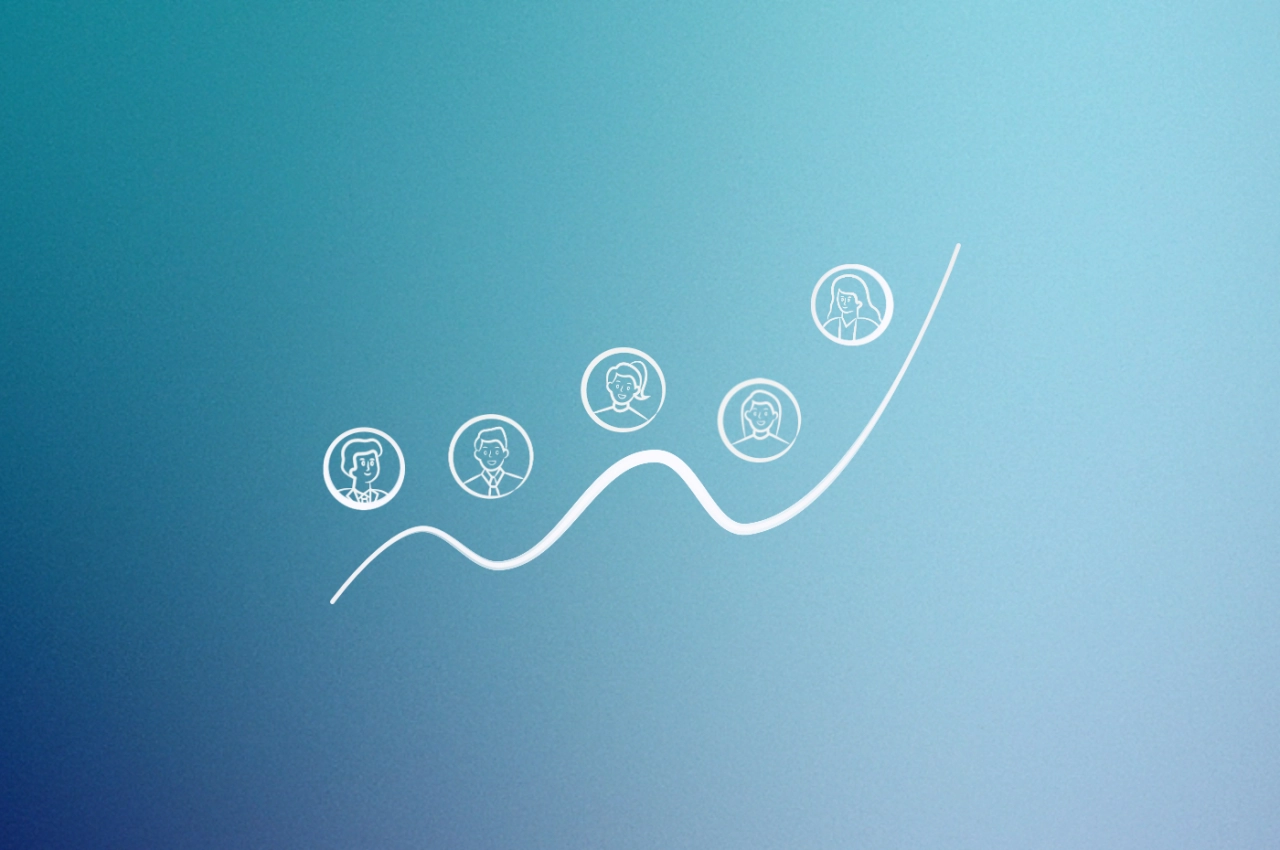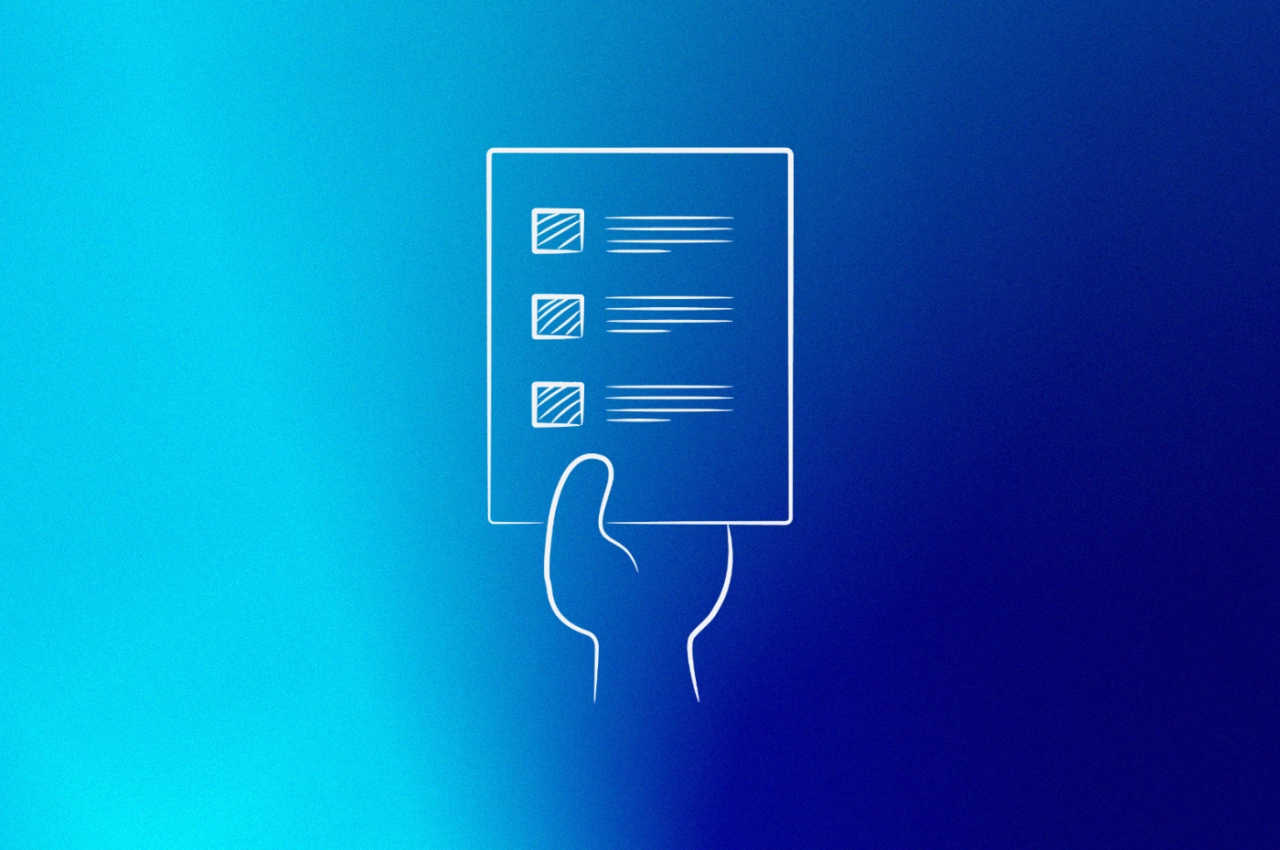- Start by identifying the key roles that are needed in your agency and defining the responsibilities and qualifications for each one.
- Foster a culture of collaboration and communication by establishing team goals, providing regular feedback, and encouraging team members to share their ideas.
- Hire applicants based on their skills and how well they fit into your company while ensuring a smooth hiring process.
Building an agency and hiring the right people is a delicate process. You need to be quick—move too slowly, and you could miss out on talent and opportunities. But you also need to be careful as bad hiring decisions can cost you in time, money, and reputation.
To make sure your team is up to snuff, you’ll need a plan of attack. In this article, I’ll be walking you through the process of how to build your agency team. I’ll cover everything from identifying agency gaps to recruiting the best candidates.
1. Identify key agency gaps
Every agency has gaps—in expertise, in workload capabilities, and so on.
Some of these are gaps that need to be filled in order to secure a sustainable future for your agency. Others are gaps that you can work around—at least for the time being. Identifying the former is the first step in creating a solid agency team structure that will lead to high productivity.
How do you identify agency gaps, though? There are plenty of methods, but I’ll be introducing you to a purpose-built solution called HR gap analysis.
HR gap analysis
HR gap analysis is a process agency owners can use to identify the gaps in their team that are preventing (or will prevent) your company from reaching its business objectives.
Let’s take a look at the 4-step process:
Identify goals: What goal is your agency trying to achieve at the moment? These could be related to making more sales, aquiring new clients, branching out services.
Identify key skills: What are the skills that will allow you to achieve your goal(s)? These could be soft skills or hard skills. For each skill you identify, rate it on a scale (1 to 10) for importance and the level of expertise required. Use the important rating to identify skills that are really important; hold onto the required expertise ratings for the next step.
Assess current skills: Do your current employees have the skill set necessary to achieve your goal? To answer this question, you’ll likely use a combination of questionnaires, skills tests, and observation. Rate their actual skill on the same scale you used earlier.
Compare results: Compare the results of skills assessment to the required expertise rating. This will give you an insight into which areas need improvement and who can help fill those gaps.
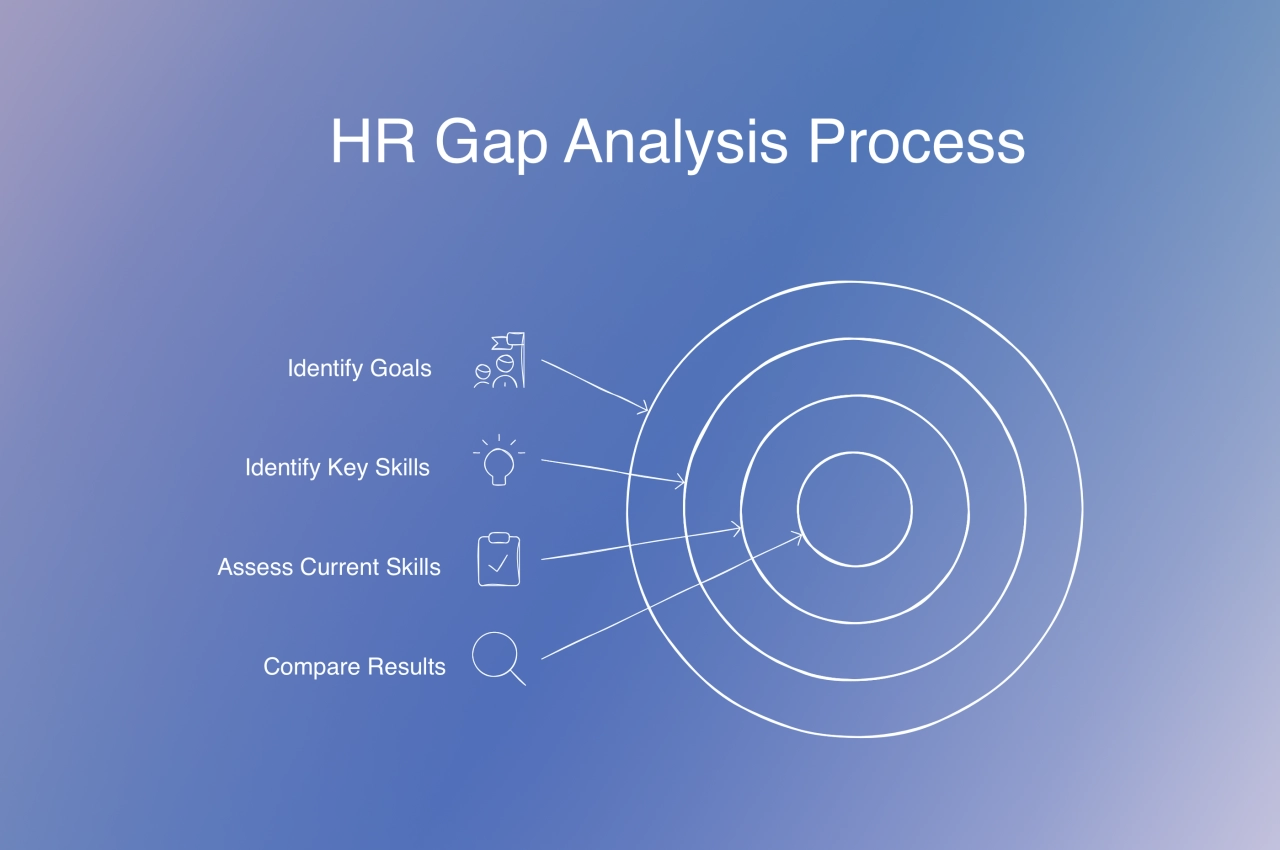
Armed with a solid overview of your situations, you’ll be much more confident moving into the next phases.
2. Choose an agency team structure
Before you start hiring people, there’s another step you need to take first, and that is to decide on a team structure.
Here are 8 common agency team structures to choose from.
Flat organization: A flat organization structure has few layers, where all employees report directly to the CEO or founder.
Hierarchical structure: A hierarchical structure is traditional and linear, with clear lines of authority from top-level executives (CEOs, CTOs) down to individual team members.
Matrix organization: In a matrix organization, teams are organized by function (e.g., strategy, marketing, sales), rather than geography or level of seniority.
Function-based structure: A function-based structure organizes employees into departments based on their job functions, such as creative, account management, and production.
Project-oriented team (POD): In a POD team structure, teams are formed around specific projects or clients, with the goal of delivering high-quality results within a defined timeframe.
Agile-style organization: An agile-style organization prioritizes flexibility, collaboration, and continuous improvement, often using iterative development methodologies like Scrum or Kanban.
Hybrid structure: A hybrid structure combines elements from multiple team structures to create a unique organizational design that suits the agency's needs.
E-clectic (ECLECTIC) organization: An e-collective organization is characterized by its flat, self-managing teams and decentralized decision-making processes. Employees are encouraged to take ownership of their work and collaborate with others across functions.
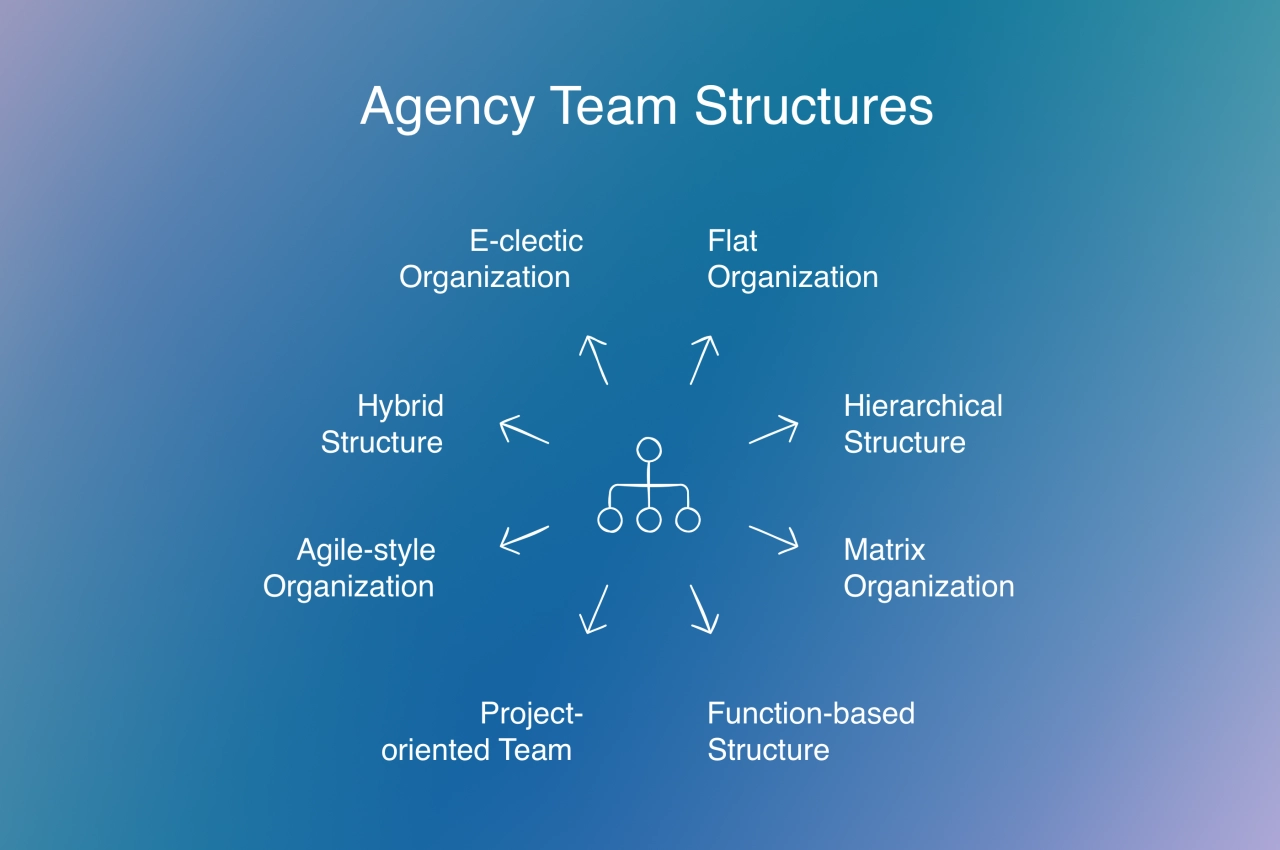
Each of these team structures has its own advantages and disadvantages, and agencies can adapt them to suit their specific goals, size, and culture.
3. Rule out reskilling
Before you jump to hiring, you should make sure you’ve ruled out the possibility of reskilling existing in-house team members. According to this PwC study, it’s much more cost-effective (and time-effective) to invest in current members of staff than it is to hire externally.

Of course, reskilling isn’t always an option, but it’s worth exploring—especially if you already have a great team that’s just missing one or two key skills.
Start by looking within the agency for people with skills that are related to ones that you’re looking for. Next, brainstorm potential methods for reskilling, for instance:
online courses
external mentorship services
If you either don’t have a suitable candidate or can’t think of a way to reskill current employees, hiring may be the way to go to build the best team possible.
4. Rule out tools
This is a very similar point to the previous one, so I won’t spend too long on it.
Before you start hiring, ask yourself: is there a way to achieve the same result with technology or tools? Things like automated client billing, AI-driven chat bots, and no-code solutions can all help you bridge gaps without new hires. You could spend money building our your sales team, but investing in chat bots could bring similar results. Of course, technology isn’t yet able to replace a human, but for certain tasks, they are a viable alternative.
Another important factor are tools such as client portals. Let’s say you’re thinking about hiring a web developer to add one to your agency’s website.
Instead of building it from scratch, you could use SPP’s no-code client portal. It can be fully white labeled and sit on your own subdomain. You’ll be able to keep the same branding, customize the design and features, and more—all without having to hire a web developer.
Looking to make sure SPP.co is right for you? Get on a call with our customer success team.
SPP costs much less than the combined cost of recruitment, freelancer onboarding, and salary. Plus, it’s proven technology powering thousands of successful agencies.
5. Define roles and profiles
Okay, you’ve ruled out reskilling, tools, and technology. It’s time to define the roles that you need to fill and profile the candidates who will fill those roles.
Start by creating a job description for each role that you need to fill. Make sure to include details about:
skills
duties
responsibilities
commitments
Once you have your job descriptions, create a profile of your ideal candidate for each role. This should include things like experience and qualifications, but also intangible qualities—like personality traits and attitude.
Keep in mind that the job description should be tailored to the role you’re looking to fill. Those who are supposed to join your creative team need to have different attributes than those for the marketing team or a strategist overseeing your agency’s overall growth.
6. Create a targeted recruitment plan
A recruitment plan is a document that you use to systematize the hiring process—and it should be targeted to what your agency needs from skilled workers.
To create your recruitment plan, there are four simple steps.
Determine candidate selection criteria: This should include both key skills that you identified in the HR gap analysis and any other qualities, for instance if the person can work remotely, is entrepreneurial, and fits into the company culture.
Choose your recruitment channels: Not all recruitment channels are equal—some are better suited for certain positions than others. If you hire a developer, you could just post an ad on a job board; for social media managers, why not just post on Twitter and see who applies?
Set a timeline: This should include deadlines for key steps in the recruitment process—things like application review and interviews. You may need to extend the deadline if you still haven’t found the perfect candidate, but it’s important to have one nonetheless.
Delegate responsibilities: Lastly, decide who’s responsible for each step in the recruitment process. If no one on your team has been a part of an agency recruitment effort before, you (the founder) need to be heavily involved.
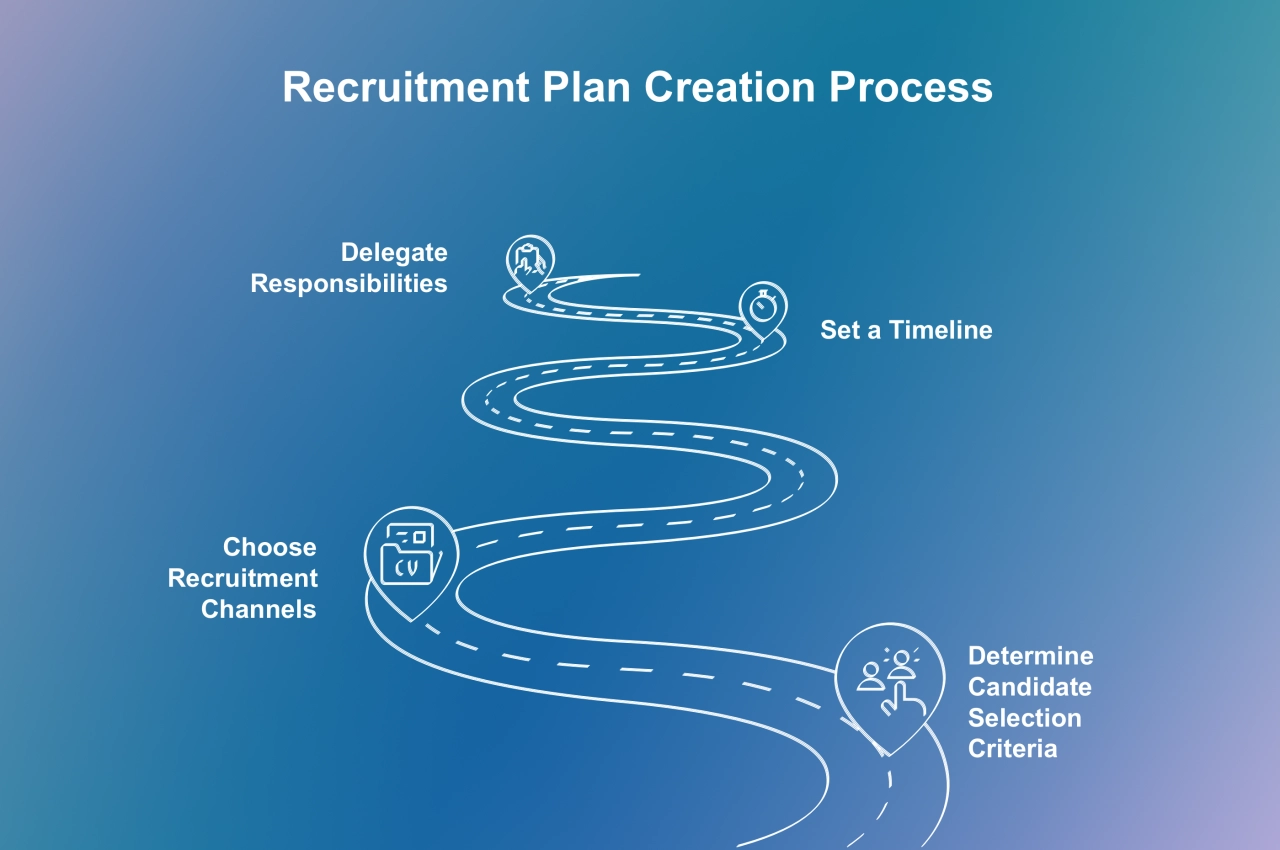
Having a recruitment plan in place will save you time and stress in the long run. Plus, it’s much easier to keep track of applications and candidates when you have a document that lists everything out.
7. Create recruitment assets
Every great recruitment effort is based on great recruitment assets. These are things like job postings, website banners, emails, videos, and social media posts.
There aren’t any rules for creating these assets, just guiding principles:
Highlight agency values and culture: Hiring people for cultural fit is hard—it’s much easier when candidates who aren’t a great fit don’t apply. Making your agency’s values and culture obvious in recruiting assets is a great way to encourage self-screening.
Focus on benefits: People don’t just want to do a job—they want to be part of something bigger. Focus on the bigger picture and emphasize how working with you will benefit them, both professionally and personally.
Write for your target audience: Marketing assets are created with a very specific audience in mind. Words, images, messages, and tone should be tailored to the ideal candidate. You got inside their head when you created profiles—use that understanding!
Creating written assets is relatively easy—Word or Google Docs and a great template will do the trick.
But if you want to create more sophisticated content—like images or website banners—you may need a tool like Canva or Adobe Express.
8. Hire for fit and potential
Skills are (obviously) important when you’re building the team for your agency—that’s why we went over the HR gap analysis. That said, someone to has the right skills on paper may not be the best fit for your team in the long run.
The solution? Screen applicants based on key skills, hire applicants based on cultural fit, potential, and attitude.
To make sure you’re assessing the right things during an interview, create a list of interview questions that specifically target cultural fit and potential. There are a ton of topics you can use to approach this, including:
Ideal work environment
Social expectations
Personal and professional development
Past progress and/or mistakes
9. Make the hiring process smooth
The goal of any hiring effort is to make the process as smooth as possible. This is a win-win—you build your agency team efficiently, candidates have a great experience and potentially join your team.
To make the process smoother, you need to do two things:
Create an organized system for collecting applications: An online form connected to a database in Google Sheets, Notion, or Airtable is an easy way to accomplish this.
Stick to the timeline: Being organized is great, but without a timeline to follow, you may get stuck in the recruitment process for months. Set realistic deadlines and stick to them—whether that’s 1-week turnarounds for interviews or 2-week timeframes for making offers.
At Draft.dev, we hire using a pretty standard multi-step hiring process. Applicant interviews are interspersed with assignments, initially a mini-assignment and then a longer paid trial that mimics the day-to-day of the job.
 Karl Hughes,
Draft.dev
Karl Hughes,
Draft.dev
By following these steps, you’ll have an efficient recruitment process and a great team in no time.
10. Developing the potential of agency leaders
Building an agency team doesn’t just involve hiring new talent. You also need to help existing people grow, especially those in important roles, such as the leading team.
Agency leaders need skills, expertise, and vision to succeed in today’s digital landscape. Developing their potential is crucial for fostering innovation, collaboration, and growth.
Leadership development programs enhance key skills such as strategic thinking, communication, project management, and team building.
These programs focus on:
Strategic planning: Teaching agency leaders to develop business strategies aligned with industry trends.
Talent acquisition & management: Training on effective hiring practices and best management techniques.
To develop leadership potential, agencies should gather feedback from executive teams and managers through regular performance reviews. This identifies areas for improvement and informs targeted growth strategies.
By acting on feedback and conducting follow-up meetings, agencies can refine their leaders' skills and drive business outcomes.
Best practices for building your agency team
To close out this guide, I thought it would be helpful to include a few best practices for hiring and building a successful team:
Start with your network: It’s often easier to fill positions with people already in your network. Ask colleagues, friends, and contacts if they know the right person for the job.
Take your time: Don’t hire people just because you need to fill a position—hire people who will be valuable additions to the team. It’s okay to extend a deadline in order to find the right person.
Be flexible with experience levels: Don’t focus solely on experience. Sometimes, a candidate who is just starting out may be a better fit for your team than someone with more experience.
Test their skills: Even if someone has the perfect resume, don’t skip skills tests. More than 80% of applicants lie or exaggerate during the application process.
Be direct with offers: When it’s time to make an offer, be clear and direct with the details. Nobody likes ambiguity when it comes to their salary or job title.
Invest in a great onboarding experience: It’s hard to overstate how important onboarding is for long-term employee engagement. Make your employee onboarding experience a great one with hands-on training, frequent progress meetings, and helpful resources. And finally, let go of your diy mentality and let your team do their work without micromanging every task.





